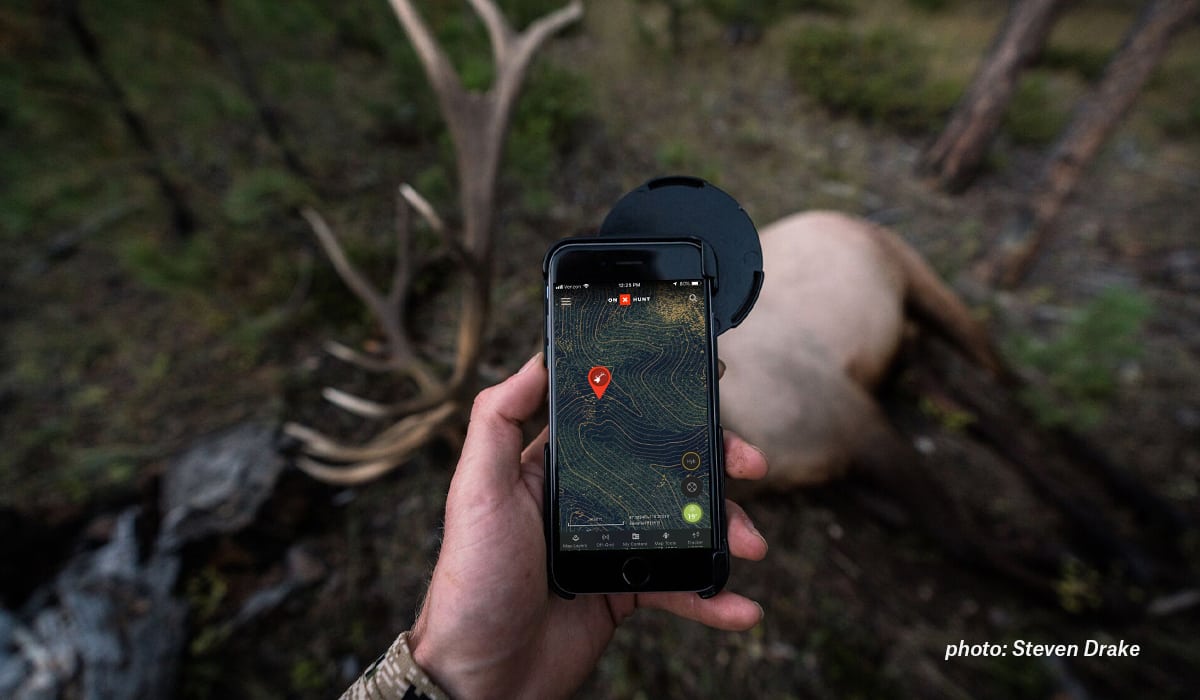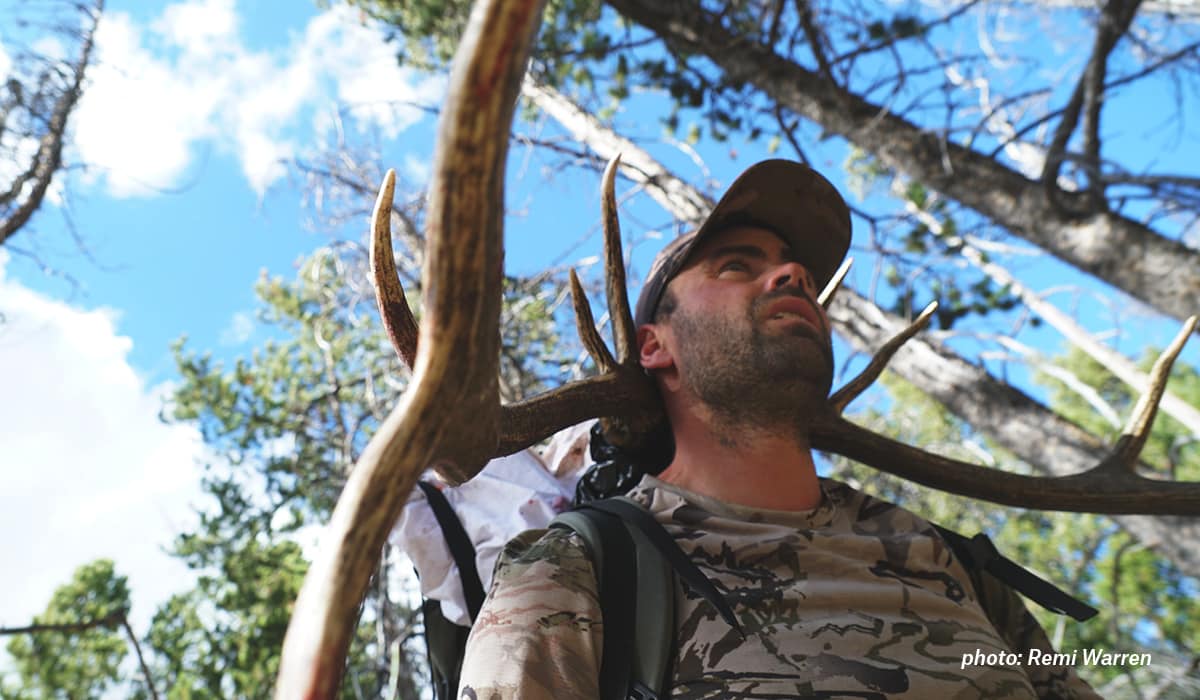Remi Warren is recognized as one of the most capable hunters of our generation. In this piece, he explains how he uses topography to locate bulls in timbered areas.
We’ve all heard it before—food, water, and cover are the main ingredients necessary to find elk. While that’s true, how do we use these requirements to locate elk when an entire area is timbered? One of the most beneficial tools for locating bulls, and my secret weapon for finding elk, is topography. Topographical features tell a story through topo lines and reveal clues about where the elk may be hiding. This is especially true when you can’t see the lay of the land from the ground.
Hidden topographical features can help you pinpoint areas in which to focus your efforts and narrow your search area when hunting timber. Understanding the topography will get you into higher percentage areas and within eyesight of a dark timber bull. Benches, fingers, bowls, basins, and wallows are elk hotbeds, and certain topographical features will tend to hold more elk than others. For this reason, a topo map such as onX Hunt’s Topo and Hybrid Basemaps can be your first step to finding timbered-up elk

Elk Behavior and What To Look For
Topography tells the story of elk behavior, and understanding why elk do what they do will help you pin them down. The two things on which to key in, regardless of the time of year, are safety and comfort. Safety is a given—elk want to have an advantage over danger and will place themselves in an area that gives them the highest likelihood of survival. Comfort isn’t talked about as frequently, but it’s extremely important when trying to discover where elk might be.
Elk are large animals, and they want to expend as little energy as possible while remaining comfortable. Elk like the easiest route possible. That’s not to say that they don’t live in some steep, gnarly country—they do. It’s also not to say that they won’t be seen walking up a steep face with ease—they will. If given the option without pressure, elk like to travel ridges and fingers that allow for easier maneuvering. They have common trails that avoid large blowdown, and they love to bed somewhere flat.
Comfort and Security
First, let’s key in on the comfort aspect of elk behavior. Have you ever wondered what elk do during hunting hours? The answer is that they bed down. During a large portion of legal hunting hours, elk are simply lying around. Bedding is a daily activity for elk, and the areas in which they bed are not randomly chosen. I have watched an elk feed in one area and travel a mile just to reach a bedding area and lay down for the day because it was a location that provided optimal comfort and security.
When elk bed on a slope, they will have to position themselves horizontal to the hill and will often be looking downslope. This means that unless the wind is at their back, they are spending most of the day not covering all their bases. If they pick somewhere slightly flatter, they can bed in multiple directions as a herd using both their eyes and their noses. Aside from being more comfortable when bedding on a flat ridge, elk will also have more options for escape including quick, downhill getaways in multiple directions. As used here, flat is a relative term meaning flatter than the surrounding area and not necessarily a truly flat spot. In areas with more slope, elk will bed where the prevailing wind is moving downhill as this is the safest place for them.

Seeing Behavior on a Topo Map
Understanding the conditions elk prefer can help us begin to paint a real-world picture of where they will most likely bed. Start by looking at a topo map and identifying areas where the terrain consists of ridges and fingers. A ridge refers to the main spine of any topography, and fingers are any subsequent spines branching out from the main ridge.
Local knowledge of prevailing winds in the area will also help determine which side of the ridge elk will prefer. onX Hunt includes wind speeds and directions, helping you locate the best areas in which to focus your attention. You must also consider thermals. Thermals will rise with the heat of the day and drop as the temperature falls. The sunny side of a mountain will have uphill thermals longer into the day, and the shaded side will have downhill thermals longer into the morning.
So, take a look at your onX Hunt Hybrid Baselayer and put this knowledge together. Remember, you will want a downslope wind and a relatively flat ridge or finger. Don’t forget to look for flatter spots in the topography that are not on ridges. These can help to identify additional bedding areas in particularly steep country and can also be the key to pinpointing wallow areas.
Give these tactics a try to locate more elk this fall, and good luck out there.